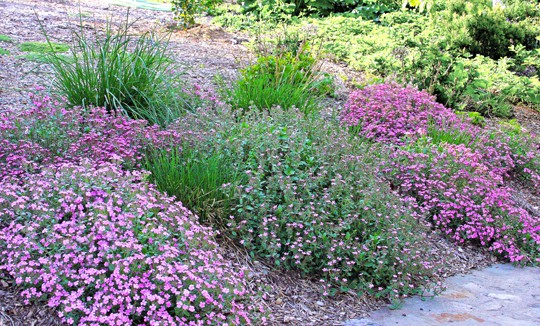Garden Reports and Rejoicing – May 21
At this time of year when people are plant shopping, they often ask why this or that variety isn’t available in cell packs. “If they can grow marigolds in a six pack,” they wonder, “why aren’t all annuals available this way?”
The answer usually is that those plants that are available in packs are varieties that can be seed grown. Plants that are only sold in pots are usually propagated from cuttings not seeds. Seeded plants are less expensive to produce while those grown from cuttings take more time.
Why can’t all plants be grown from seed? Some take too long, or are difficult to germinate. Additionally, many times plants grown from seed vary in their characteristics. The rock soapwort (Saponaria ocymoides) that I started from seed two years ago is a good example.
These spring-blooming perennials weren’t hard to germinate, and they are now self-seeding a bit in the garden. One is full and thick, and a bit shorter than the others. Another plant is later to come into bloom, and has a more open habit. Each of these perennials is slightly different. Their offspring may vary even more…now that they’re self-seeding it will be interesting to watch which characteristics are passed on to the next generation.
Consumers don’t always want plants whose traits fluctuate, however. They want to know that all the New Guinea Impatiens in their flowerbed will be the same height and will produce a similar number of blossoms.
Once someone has crossed the line from home landscaper to gardener, most are intrigued by variation. Such differences are the way that nature ensures that the best genetics continue into the future. For gardeners, deviations are a means toward new and better plants.

Saponaria is also called "tumbling Ted." Don't you love it? I like this perennial around grasses because the Saponaria blooms early in the season when the grasses aren't looking like much.

